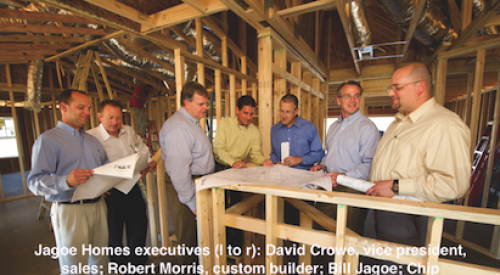In particular, I admired the 'creativity' of mortgage bankers to find new ways to put home-improvement and new construction dollars into the hands of homeowners.
Back then the go-go housing market fueled an upward spiral in the American Dream. (Here's hoping that many of you will resist the urge to find that column on Google.) I was clearly buying into a fundamental myth about the housing market. It was a myth 70 years in the making: Housing prices nationally only move in one direction, up. That widely held misperception was based on solid empirical evidence. From 1933 to 2007, the national average price of a new or existing home increased every year. In that period, house-price appreciation accelerated and slowed down in cycles, but never failed to improve.
The upward trend caused many to over-invest in their homes. When house prices started falling and continued to fall, homeowners and bankers alike looked at their housing investments differently. Residential construction investment decisions today feel like they are being made against a fluid backdrop, which is why, at a national level, we may never see a new construction market like the one we experienced from '95 to '07.
Oftentimes, I think we need to be reminded by a voice of reason that the housing market is really an aggregation of thousands of markets and sub-markets, each with a myriad of inputs and drivers. One day into this job as Editorial Director and Publisher of Professional Builder, I sat at dinner with a group of executives from a major fireplace-manufacturing firm. Several were making prognostications for 2011 in terms of the total number of new housing starts, nationally. Right now, the market is pacing at under 500,000 units and there was talk of 15, 20, even 30 percent growth on that number for 2011. Then one of the executives pressed his cell phone to my ear and said, "You have to listen to the message I just got from a builder in Pittsburgh."
The builder was Marty Gillespie of Heartland Homes. His was the voice of reason. He was relating great sales figures through July and the news that his firm, which built 60 homes 10 years ago, is on pace to close more than 500 homes this year. Many of you are not having the same luck. But Heartland's case is proof that energy, investment and creativity along with good fortune can yield good results.
Four years ago, before the downturn hit, Gillespie had the good sense to invest in a top-notch marketer, Kevin Oakley, who quickly helped the company find the right message and then, in tandem with their sales manager, get the entire sales team rallying around that message. Then they invested heavily in non-traditional marketing venues ranging from the Pittsburgh Steelers football stadium to a weekly slate of catered events hosted by satisfied homeowners.
Gillespie also had the good fortune to operate in hilly Western Pennsylvania, a place where topography provided a natural barrier to the kind of large-scale communities that would have left the area with a large supply of homes and lots when housing began to slide. Today job growth in Pittsburgh is tepid, but the lack of supply of good lots in good locations has opened the door to real opportunity for Heartland Homes.
This month, Professional Builder opens a new chapter in its 76-year history serving the housing industry. It is now owned and operated by SGC Horizon LLC, backed by a team of veteran editors and publishers who share an enthusiastic, market-level outlook for the home building industry. Our goal in the coming months and years is to be of practical assistance to building professionals, offering peer-to-peer business advice and new-product information. If we do our jobs well, we will also be a voice of reason serving as a check on conventional wisdom, which we know from experience, can be wrong.
Patrick O'Toole, Publisher potoole@sgcmail.com












